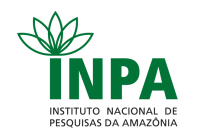Corpo Discente - Egressos
Ryan da Silva Ramos
| Título | Estudo Quimico e Medicinal de Potenciais Inibidores das Enzimas Acetilcolinesterase e Hormônio Juvenil com Atividade Inseticida a Partir do Piriproxifeno. | ||||||||||||||||||||||||
| Data da Defesa | 27/06/2019 | ||||||||||||||||||||||||
| Download | Em sigilo | ||||||||||||||||||||||||
Banca
| |||||||||||||||||||||||||
| Palavras-Chaves | piriproxifeno; biocida; Aedes aegypti. Triagem virtual. | ||||||||||||||||||||||||
| Resumo | O Aedes aegypti é o principal vetor, transmissor de patologias virais como a dengue, febre hemorrágica, febre amarela urbana, zika e chikungunya. O inseticida eficiente mais utilizado no controle do vetor é o piriproxifeno de origem sintética, no entanto as populações de A. aegypti vem mostrando resistência no Brasil. Os agentes inseticidas podem atuar em diferentes sítios ativos, por exemplo inibindo a enzima acetilcolinesterase ou no hormônio juvenil dos mosquitos, no entanto não há elucidação dos mecanismos de ação químicos e nem estrutura cristalográfica da acetilcolinesterase do A. aegypti. Assim, o objetivo deste estudo foi investigar in silico novos inibidores da enzima acetilcolinesterase e hormônio juvenil através de estudos da química medicinal. Inicialmente foi utilizado o piriproxifeno como pivô, por sua atividade inseticida comprovado, e as buscas por moléculas similares foram realizadas nas bases Zinc_Natural_Stock (ZNSt) e Maybridge, considerando propriedades físicas, farmacocinética e toxicológicas. No estudo de docking molecular para a base Zinc_Natural_Stock (ZNSt) a molécula ZINC00001424 apresentou potencial de inibição para a enzima acetilcolinesterase (inseto e humana) com valor de afinidade de ligação de -10,5 e -10,3 kcal/mol, respectivamente. A interação com o hormônio juvenil foi de -11,4 kcal/mol para a molecular ZINC00001021. As moléculas Maybridge3_002654 com valor de afinidade de -11,1 kcal/mol, Maybridge4_001571 valor de afinidade de -10,2 kcal/mol e MolPort-002-899-880 com valor de afinidade -11,6 kcal/mol, esses valores de afinidade mostram a alta similaridade de interações com resíduos de aminoácidos no sítio ativo das proteínas alvos, quando comparados aos controles internos usados no estudo de docking molecular. As moléculas apresentaram valores de energia livre significativos, o que possibilita uma grande estabilidade e tempo de permanência maior no sítio ativo. Essas moléculas podem ser submetidas a mais análises (in vitro e in vivo) para melhor verificação e confirmação do potencial inseticida aqui indicado. | ||||||||||||||||||||||||
| Abstract | Aedes aegypti is the main vector transmitting viral pathologies such as dengue fever, hemorrhagic fever, urban yellow fever, zika and chikungunya. The most efficient insecticide used in vector control is synthetic pyriproxifene, however A. aegypti populations are showing resistance in Brazil. The insecticidal agents can act in different active sites, for example by inhibiting the enzyme acetylcholinesterase or in the juvenile hormone of the mosquitoes, however there is no elucidation of the chemical mechanisms of action and nor crystallographic structure of the acetylcholinesterase of A. aegypti. Thus, the objective of this study was to investigate in silico new inhibitors of the enzyme acetylcholinesterase and juvenile hormone through studies of medicinal chemistry. Initially, pyriproxyfen was used as a pivot for its proven insecticidal activity, and searches for similar molecules were performed at the Zinc_Natural_Stock (ZNSt) and Maybridge bases, considering physical, pharmacokinetic and toxicological properties. In the molecular docking study for the Zinc_Natural_Stock base (ZNSt) the molecule ZINC00001424 showed inhibition potential for the enzyme acetylcholinesterase (insect and human) with binding affinity value of -10.5 and -10.3 kcal / mol, respectively. The Maybridge3_002654 affinity value of -11,1 kcal/mol, Maybridge4_001571 affinity value of -10,2 kcal/mol and MolPort-002-899-880 with affinity value -11,6, these affinity values show the high similarity of interactions with amino acid residues at the active site of the target proteins , when compared to the internal controls used in the molecular docking study. The molecules presented significant free energy values, which allows a great stability and longer residence time in the active site. These molecules can be subjected to further analysis (in vitro and in vivo) for better verification and confirmation of the insecticidal potential indicated herein. | ||||||||||||||||||||||||
Parceiros

























